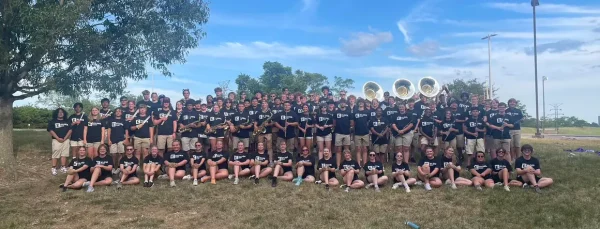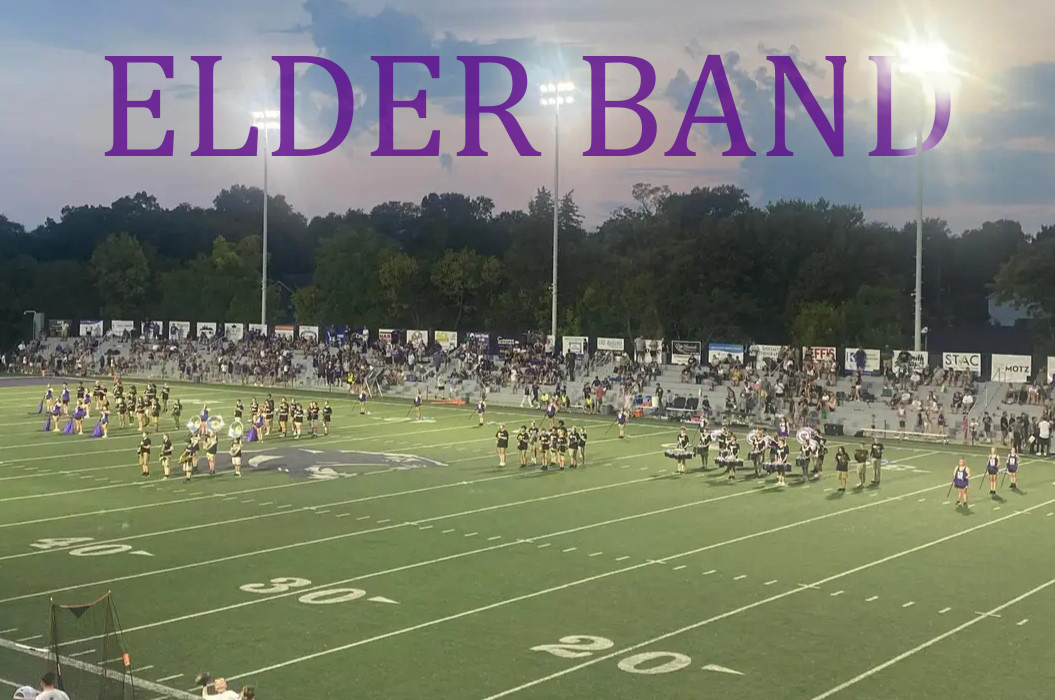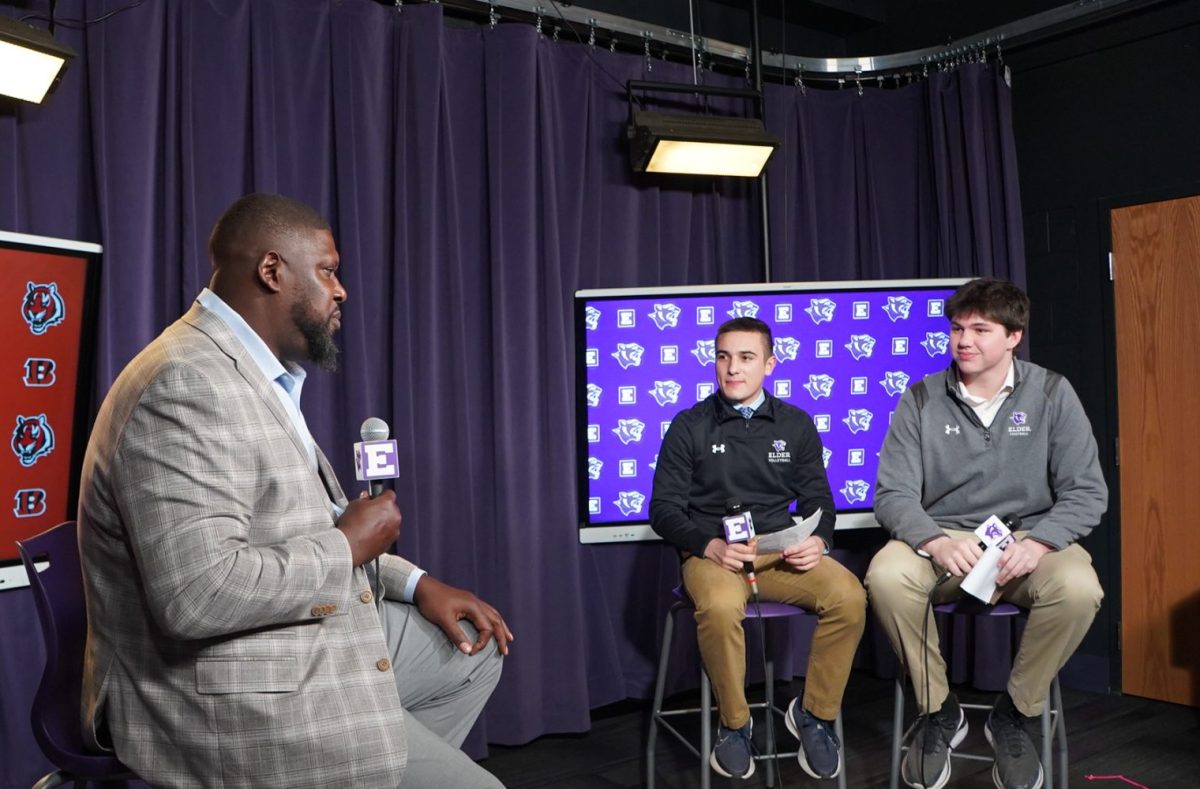High school football is back. Yet as a new sports season begins for the Panthers of Elder High School, located in Cincinnati, Ohio, another kind of season begins. The marching season.
The band has been getting ready for this new day for months over the summer, and it is well prepared for the upcoming halftime performances. However, that is only the end goal. How does the band get to this point of being able to stun a crowd of hundreds? That is what will be discovered today. Let us explore the ins and outs of what goes into preparing for the halftime performances that Elder fans stay in their seats for.
The Beginning: Pre-Camp
The first activity that brings the band back together, Pre-Camp is a weeklong camp that takes place at Elder. The students will get together from 9AM-12PM, refreshing and learning skills that assist them in the coming season. There are two parts of Pre-Camp: First Years and Whole Band. The First Years section takes place Monday and Tuesday and helps the new students joining Marching Band to learn the essentials for the next camps to come. Leadership is also present to assist the band directors, Mrs. Cassidy and Dr. Ziegler, to teach these new marchers.
The next section is for the Whole Band, lasting from Wednesday to Friday. This is to help the students that have already been in Marching Band before to refresh themselves on the basics. This preparation is essential, making the students ready for learning the show for the upcoming season. Now, the students must take on the challenge of going out to NKU for a week to live band: Band Camp.
The Challenge: Band Camp
As previously stated, Band Camp takes place over a week where the students will live and dorm at NKU, Northern Kentucky University. This is an exhausting week where the students will gather to practice as a full band in the morning, afternoon, and at night. The students will also gather for sectionals that will last around two hours a day. The only break periods during the day are after lunch and after night-time full band practice. The students are always doing and thinking band, whether it be the music or the marching drill.
I spoke to the Band Director, Mrs. Susan Cassidy, about Band Camp and what is involved. The main goal of Band Camp is to learn as much music as possible, and this means that “a freshman or a second-year player is not going to learn the whole show in five days.” Band Camp is very vigorous, especially to these new students in band. This all means that the directors must keep Band Camp fast, but make sure to include these new marchers.
Learning the Music
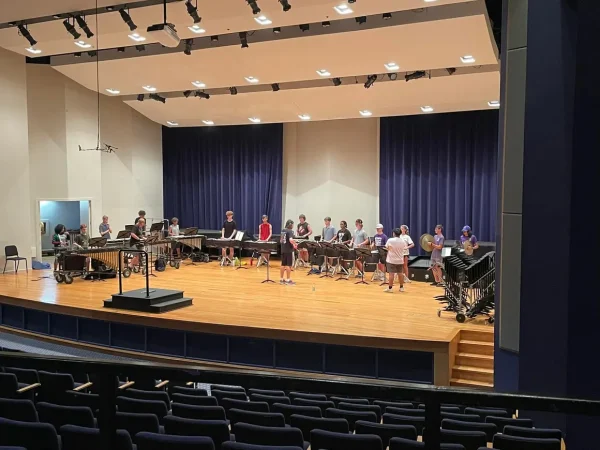
Now, let us discuss the two main aspects of the learning process at Band Camp: learning the music and the drill, or the marching patterns. During a normal day at Band Camp, Susan said the students have two-three hours worth of time in the individual sections. This means that the band will split off throughout the NKU campus into rooms with trumpets, clarinets, low woodwinds and brass, and others. This time is essential for new students, especially those who have never played instruments until either the year of Band Camp or the last. “We can have smaller groups work with someone who plays their instrument and can teach them,” she stated.
Marching the Drill
While marching may seem to look easy at first, it is a whole different beast than the commonly described “fancy walking”. There is a reason that Pre-Camp is used for the matters of learning to march, and one of the biggest is step size. Marching band uses a ratio of eight-to-five, meaning eight steps should take up the space of five yards on a football field. This means that every step must be exactly 22.5 inches.
Now that the students know how to march, they must learn where to march on the field during the show. Each students will have a corresponding letter and number that they must know to find their spot on the field. The band, Color Guard included, stretches out to both sides of the 20-yard line. This means that the spots do not have to be exact, but they must be close as to look correct when a spectator is watching. Overall, the marching is difficult, but students are able to learn it very easily. “There was three students absent from camp and 85 people that could quickly find their spot,” Mrs. Cassidy commented on reviewing the marching after Band Camp.
The Refinements: Post-Camp
After Band Camp, the students have a week off to absorb the information they had just been giving over a very intense week, as well to relax before going into the final camp before the school year begins: Post-Camp.
Post-Camp is very similar to how practicing during the school year will be for the students in band. Now that they have learned the show, they are coming in to attempt to come out with more knowledge or skill on what they will be doing during a marching band show. They will still do a combination of what was happening at Band Camp, but without the same intensity.
Feature: The Elder Drumline
The Elder Drumline is governed by Mrs. Cassidy as well as the Assistant Band Director, Dr. Aaron Ziegler. While they do participate in the same events as the rest of the band, they must learn the show very differently.
Memorization
The Drumline must be able to keep the students in the rest of the band in time with each other while marching. This means that the Drumline must memorize all of their music during Band Camp for the nightly marching rehearsals. This is a very large challenge for the students, with Aaron stating how the students will play a very large amount of music, but they will not remember it all.
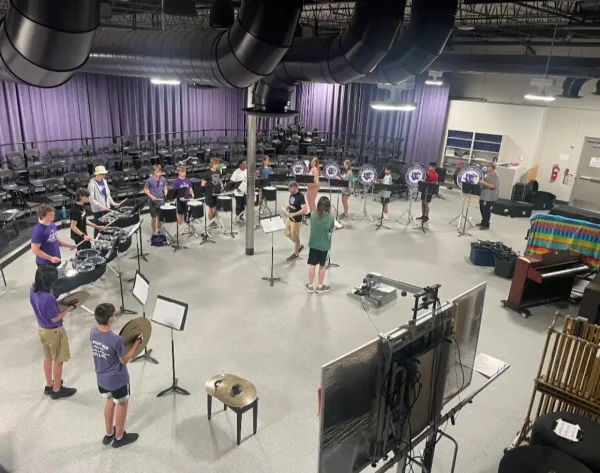
2024 season at Drumline Camp. (Source: Facebook – Elder Band: The Spirit of Elder)
“You are going to be able to get from beginning to end with a few mistakes that I am going to fix once we come back from camp,” Ziegler stated about memorization.
Quick Choices to Make
The Drumline is the loudest and, therefore, most controlling part of our band, so the Drumline must be able to make “those game-time decisions” in order to adapt to their environment and their own mistakes.
Dr. Ziegler, in particular, has a system of hand signals he gives to the Drumline to control how they are playing while adapting. One example of this that he informed me of is an open hand signal, which tells the Drumline to relax their hands while playing. Another more simple signal is holding up his fingers to tell them how many inches to play off of the drum in relation to volume, whether it be three, six, nine, or twelve.
Where Does The Band Go From Here?
After all of this work throughout the summer months, where does Elder Band go from here? Now, the band must continue to improve their show, facing difficulties throughout this improvement. They will continue to work on the marching drill and playing the music, while also handling the pressures of the school year. Overall, it is a challenge, but this band, 100-students strong, is very prepared for the challenge.
